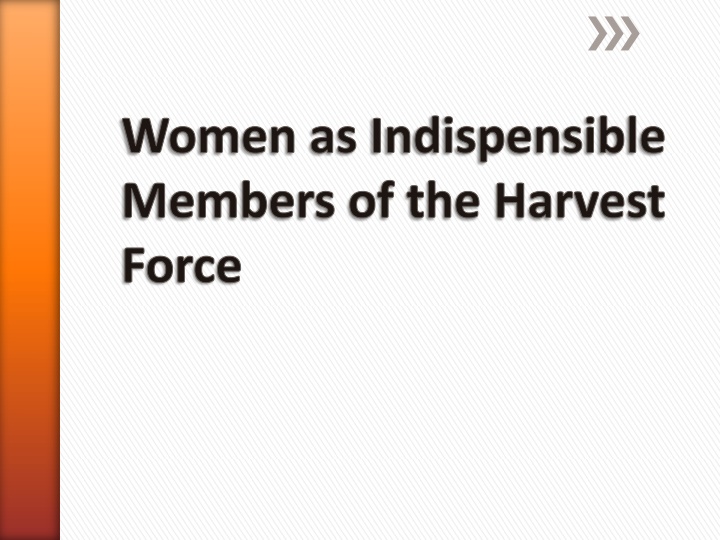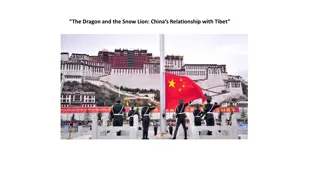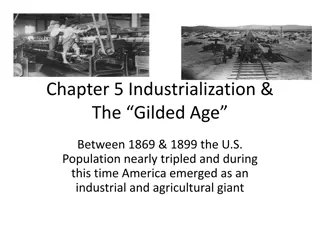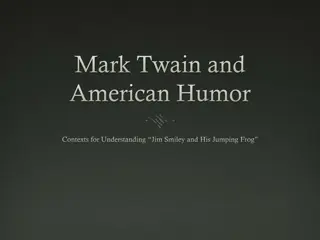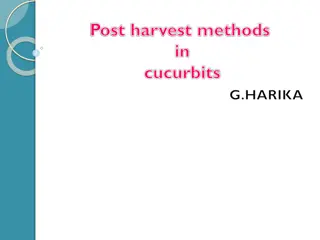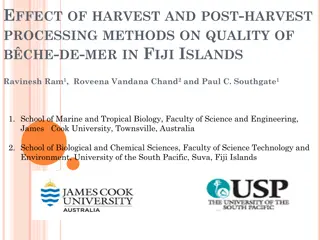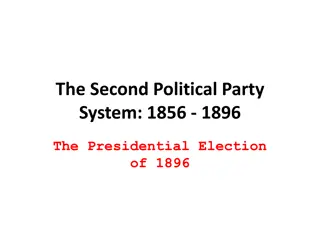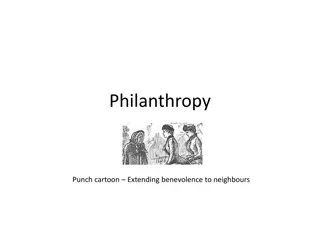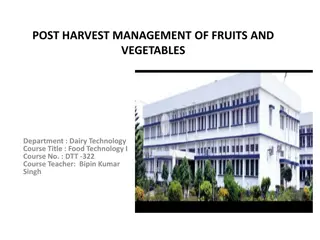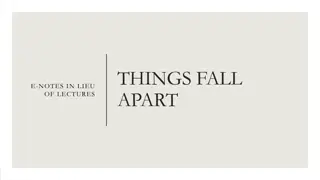Women as Indispensable Members of the Harvest Force: The Rise of Female Missionaries in the 19th Century
The 1800s saw the emergence of women missionary societies to address limitations faced by women in missions. British women played a pivotal role in funding and expanding missionary work globally. Female missionaries grew in numbers, challenging traditional gender roles. Their impact included promoting missions, setting policy, and demonstrating financial capacity. Women missionaries were instrumental in missions and contributed significantly to the growth of churches worldwide.
Download Presentation

Please find below an Image/Link to download the presentation.
The content on the website is provided AS IS for your information and personal use only. It may not be sold, licensed, or shared on other websites without obtaining consent from the author.If you encounter any issues during the download, it is possible that the publisher has removed the file from their server.
You are allowed to download the files provided on this website for personal or commercial use, subject to the condition that they are used lawfully. All files are the property of their respective owners.
The content on the website is provided AS IS for your information and personal use only. It may not be sold, licensed, or shared on other websites without obtaining consent from the author.
E N D
Presentation Transcript
Women as Indispensible Members of the Harvest Force
Protestant Missions and Women The 1800s saw the rise of women missionary societies. These societies were birthed because of the need to address some of the limitations and discriminations that women faced in those days. Single female missionaries were not appointed nor were they given opportunity to use their full gifts and callings.
In the early nineteenth century women either supported the missions as auxiliaries at home collecting funds or served as missionaries wives on the field. Though these women received little or no credits for their contributions to world evangelization in their time, it is noted that British women were mobilized on behalf of foreign missions in larger numbers over the entire course of the nineteenth century than on behalf of any other cause except perhaps the antislavery movement. Other significant contributions by British women include providing about 70 percent of the funding for foreign missions by the end of the nineteenth century. By the early 1890s the number of female missionaries in foreign fields was fast approaching the number of men and the female applications far exceeded those of males. Within four years, 1814-1818, women s missionary societies in North America grew from forty to ninety-seven. The percentages of women to men on the mission field grew exponentially: 1830- 49% 1880- 57% 1929- 61%
By 1888, the World Missions Conferences gave recognition to women s contribution to missions. Some of the global impact these women missionaries and the women missionary societies had included: The promotion of missions and expansion of missionary force around the globe more than any of the denominational boards of their time. Provided opportunity for women to fulfil roles hitherto denied them by denominational boards. As such, women were able to set policy, determine strategy, and administer their mission boards effectively and efficiently. Demonstrated the incredible financial capacity women possessed for supporting and maintaining missions. The women got full status as missionaries . Prior to this, some had the attitude that women are valuable in missionary work, but their position must clearly be inferior. Their roles were either to be a missionary s wife or to be a third-class missionary assistant. First- and second-class missionary assistants were crafts men and doctors. However women doctors qualified as second-class missionary assistants. Women were the back bone of missions in the 20thcentury. 2 out of 3 missionaries were women. The women missionary organizations in North America collected pennies for missions and were able to send out over 200 women missionaries to China. The resulting fruit of their work is that the women they taught in China are now the leaders of the growing churches.
James Hudson Taylor (1832-1905), founder of the China Inland Mission believed that women could work as pioneer evangelists and regularly sent women to do pioneer missionary work and open new stations. His was virtually a lone voice in that era that challenged the Victorian notions of womanhood. He wrote to missionary candidates Unless you intend your wife to be a true missionary, not merely a wife, home-maker and friend, do not join us. The prospect of greater challenge and more opportunity for freedom made them most attractive to young independent women. China Inland Mission at a time had 358 men, 290 single women, 231 married and 21 widowed . (Excerpts from N.Tukura, The Role of African Women in Missions , in P. Vumisa (ed), Evangelical Christian Missions: An Africa Perspective,
Stories of African Women Missionaries Modern day Mary Slessor the story of The Blessing (Unreached Children s Home) CAPRO Women in Missions Their vision is To Soften The Harvest with our Tears With a membership of about 60-65 women, these women have since 2002 when the group started visited about 16 mission fields within Nigeria and 7 in other African countries. They visit 2 local fields and 1 international field each year. They engage in projects on these fields such as water projects and provide supplies for the missionaries. Each project is executed by faith and complete dependence on God.
